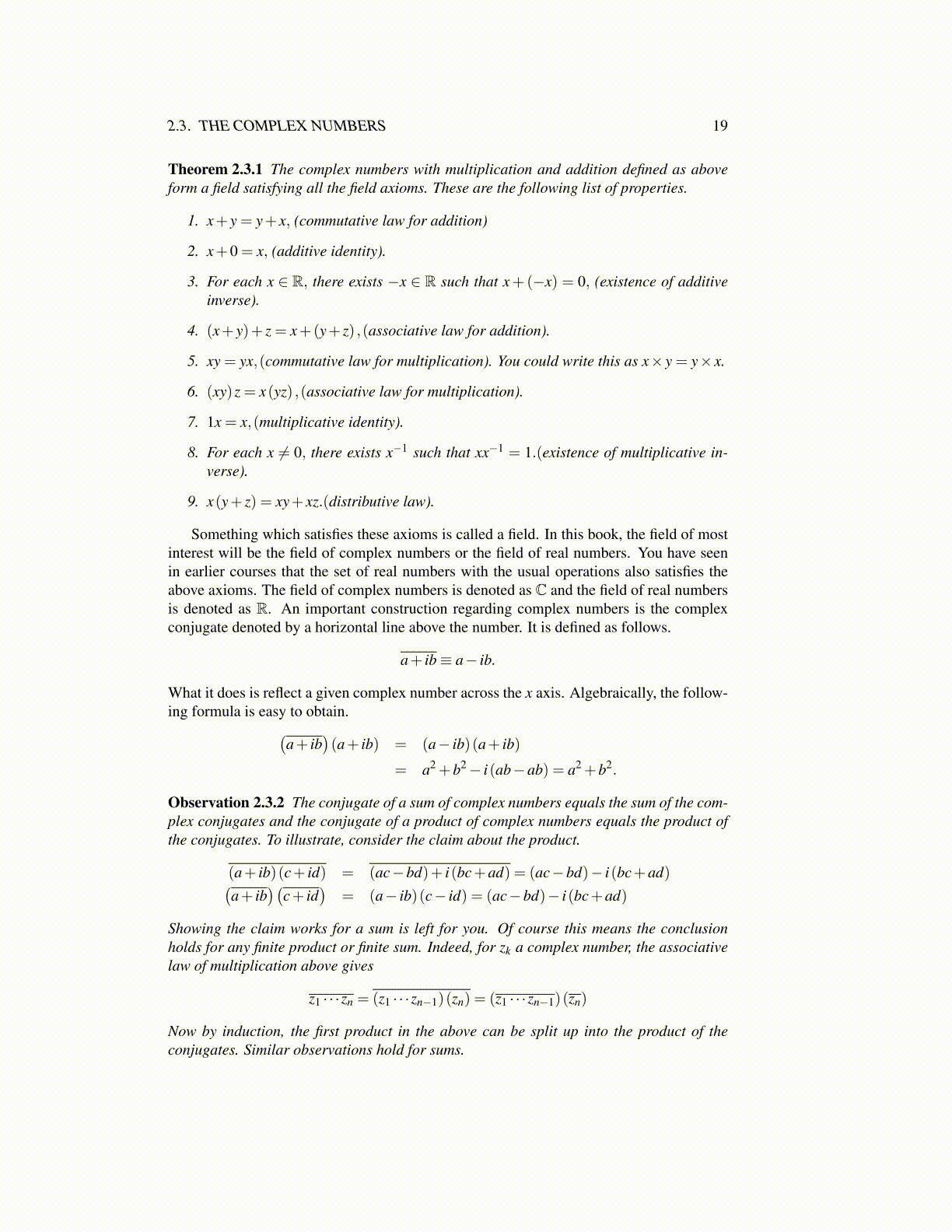
2.3. THE COMPLEX NUMBERS 19
Theorem 2.3.1 The complex numbers with multiplication and addition defined as aboveform a field satisfying all the field axioms. These are the following list of properties.
1. x+ y = y+ x, (commutative law for addition)
2. x+0 = x, (additive identity).
3. For each x ∈ R, there exists −x ∈ R such that x+(−x) = 0, (existence of additiveinverse).
4. (x+ y)+ z = x+(y+ z) ,(associative law for addition).
5. xy = yx,(commutative law for multiplication). You could write this as x× y = y× x.
6. (xy)z = x(yz) ,(associative law for multiplication).
7. 1x = x,(multiplicative identity).
8. For each x ̸= 0, there exists x−1 such that xx−1 = 1.(existence of multiplicative in-verse).
9. x(y+ z) = xy+ xz.(distributive law).
Something which satisfies these axioms is called a field. In this book, the field of mostinterest will be the field of complex numbers or the field of real numbers. You have seenin earlier courses that the set of real numbers with the usual operations also satisfies theabove axioms. The field of complex numbers is denoted as C and the field of real numbersis denoted as R. An important construction regarding complex numbers is the complexconjugate denoted by a horizontal line above the number. It is defined as follows.
a+ ib≡ a− ib.
What it does is reflect a given complex number across the x axis. Algebraically, the follow-ing formula is easy to obtain.(
a+ ib)(a+ ib) = (a− ib)(a+ ib)
= a2 +b2− i(ab−ab) = a2 +b2.
Observation 2.3.2 The conjugate of a sum of complex numbers equals the sum of the com-plex conjugates and the conjugate of a product of complex numbers equals the product ofthe conjugates. To illustrate, consider the claim about the product.
(a+ ib)(c+ id) = (ac−bd)+ i(bc+ad) = (ac−bd)− i(bc+ad)(a+ ib
)(c+ id
)= (a− ib)(c− id) = (ac−bd)− i(bc+ad)
Showing the claim works for a sum is left for you. Of course this means the conclusionholds for any finite product or finite sum. Indeed, for zk a complex number, the associativelaw of multiplication above gives
z1 · · ·zn = (z1 · · ·zn−1)(zn) = (z1 · · ·zn−1)(zn)
Now by induction, the first product in the above can be split up into the product of theconjugates. Similar observations hold for sums.